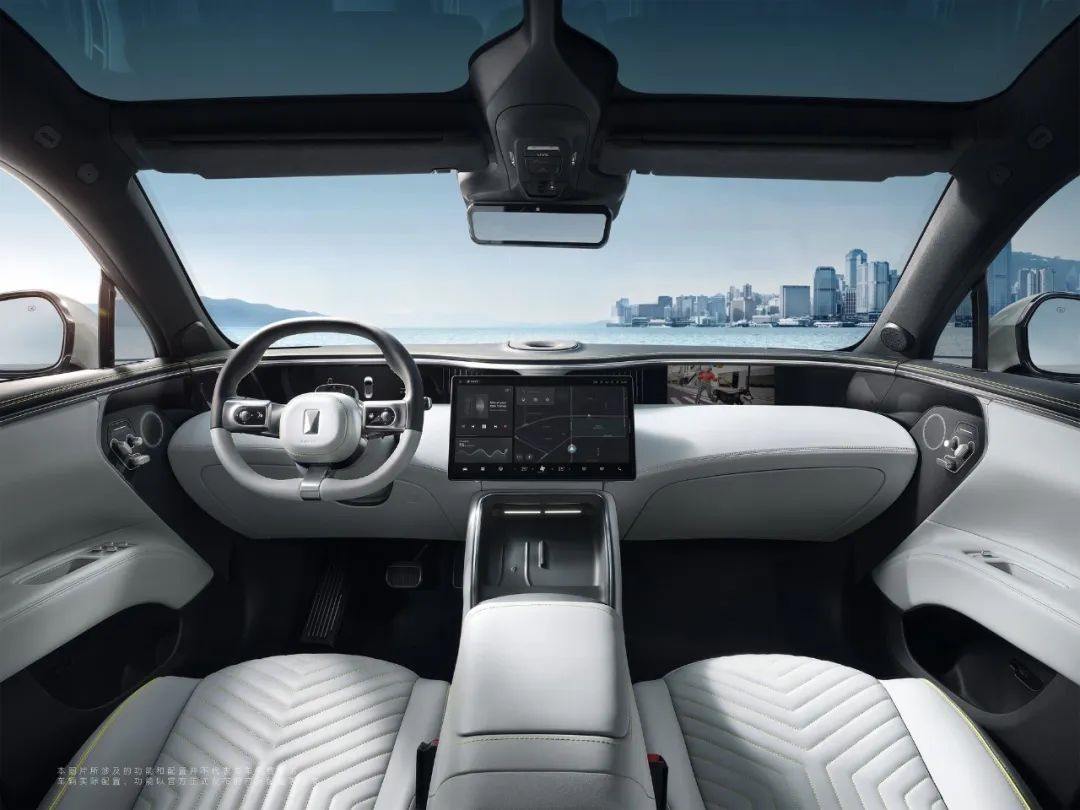author: Mr.Yu

Avita Technology, which has always been cautious in releasing information, chose May 20th, the Chinese Internet-invented Valentine's Day, to release their first all-electric SUV Avita 11's cabin design and launch intention gold pre-orders with the amount of 520. To be honest, the aesthetics of Avita 11's interior design led by the creative director of Yves Saint Laurent, Matthew M. Williams, and designer Nader Faghihzadeh, born in Tehran, Iran, still hits my personal taste.

During these days, many media colleagues have made brilliant interpretations, and the frequency of "luxury" and "luxuriousness" in the headlines is not low. Everyone who has seen it must have their own opinions.
The official pictures and texts are worth pondering. Is there a cross-border pedigree behind it? Is it the designer's mind? Or other motives?
As a media that has always been concerned about intelligent cabins, GeekCar also has its own interpretation.
"Compliments" have always been what I am least good at. So I choose to start from my own understanding and knowledge reserve and take a look at those details worth discussing in the cabin of Avita 11 with you.
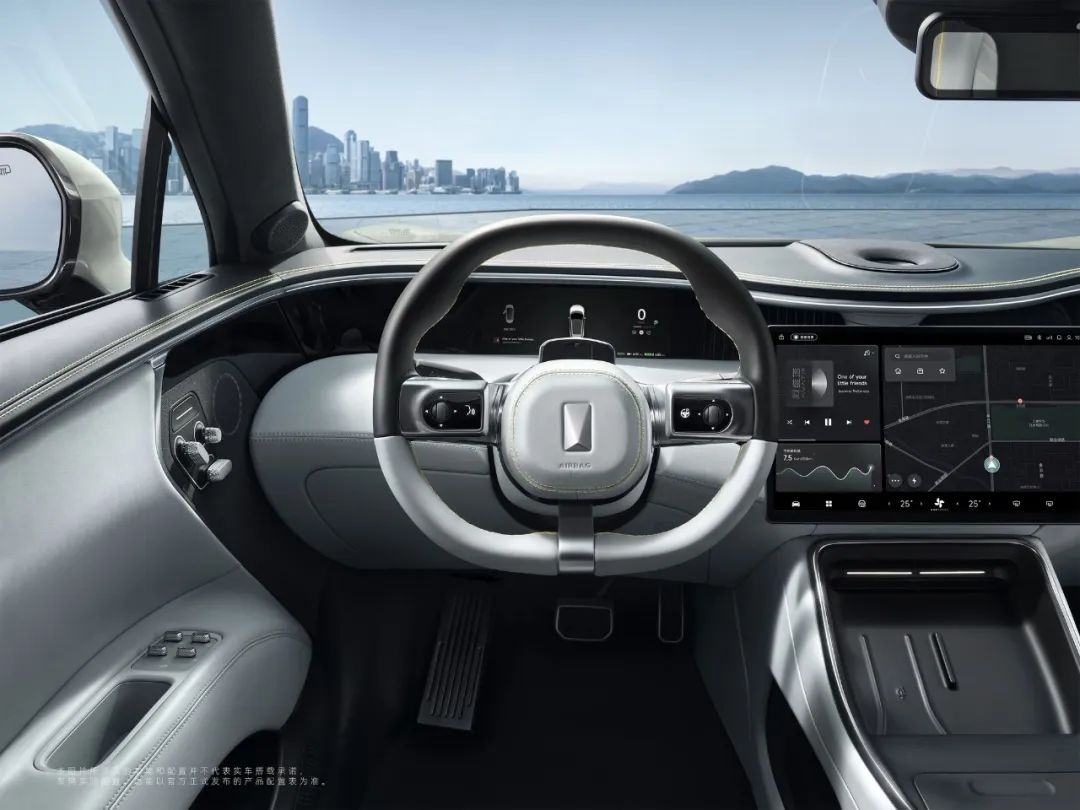
## A large amount of curved design is due to understanding humanity.
At first glance, the cabin of Avita 11 avoids the appearance of right angles to the greatest extent, and everything in the field of view is curved. The official name it "Surrounding Sensing Cabin."
The large application of curved elements, various components that may form interactions, and functional spaces that may be used form a rounded enveloping feeling for the driver and passengers in the car.
The rear seat can be adjusted 12° backwards or 28° forwards based on the preset position, and the user can achieve their most comfortable seat tilting angle by fine-tuning it.

Translation in English Markdown
The enveloping sensation formed by a large number of visually curved lines, coupled with the greatly adjustable seat angle, not only brings physically touchable comfort to people. We believe that the cockpit designer of the Avita 11 wants to simulate the environment before the birth of newborns in their mother’s uterus and the environment in which life is in its initial form through this series of elements.
Do you still remember the period of time when your newborn baby at home had just been born and was often restless and crying at night? Experienced people know that the crying of newborns is the most accurate weapon that can stimulate parents’ nerves. At this time, we would use a soft towel to “pack” them. The human infant in the swaddle would quickly calm down, and if lucky, could sleep soundly till the next morning, saving our own sleep time.

We believe that this is a quite enjoyable design.
The application of a large number of curved elements and the enveloping seat are the team’s serious analysis of the most primitive underlying psychology in human needs, and through design and other means, bring maximum comfort and sense of security to all people in the cockpit.
To put it more romantically, as lazy as I am, in the ride-hailing car commuting every day, the most comfortable posture at any time is to curl up in the corner of the back seat, wear noise-cancelling headphones listening to favorite podcasts, or just take a nap with relaxing music.
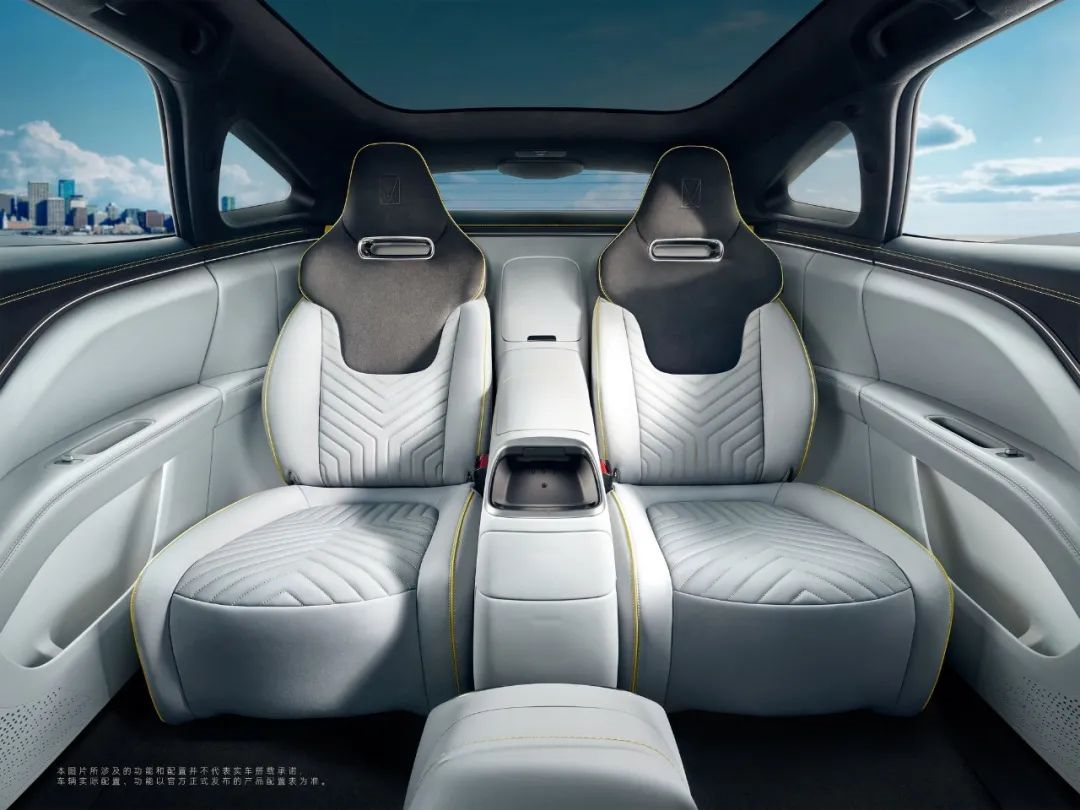
A Unique Interactive Entity
In the center of the Avita 11 cabin is a 15.6-inch full HD floating central touch screen. The “Vortex Emotional Flow” device is hidden behind the central control screen, together with a row of reflective materials set to enhance the reflection effect.
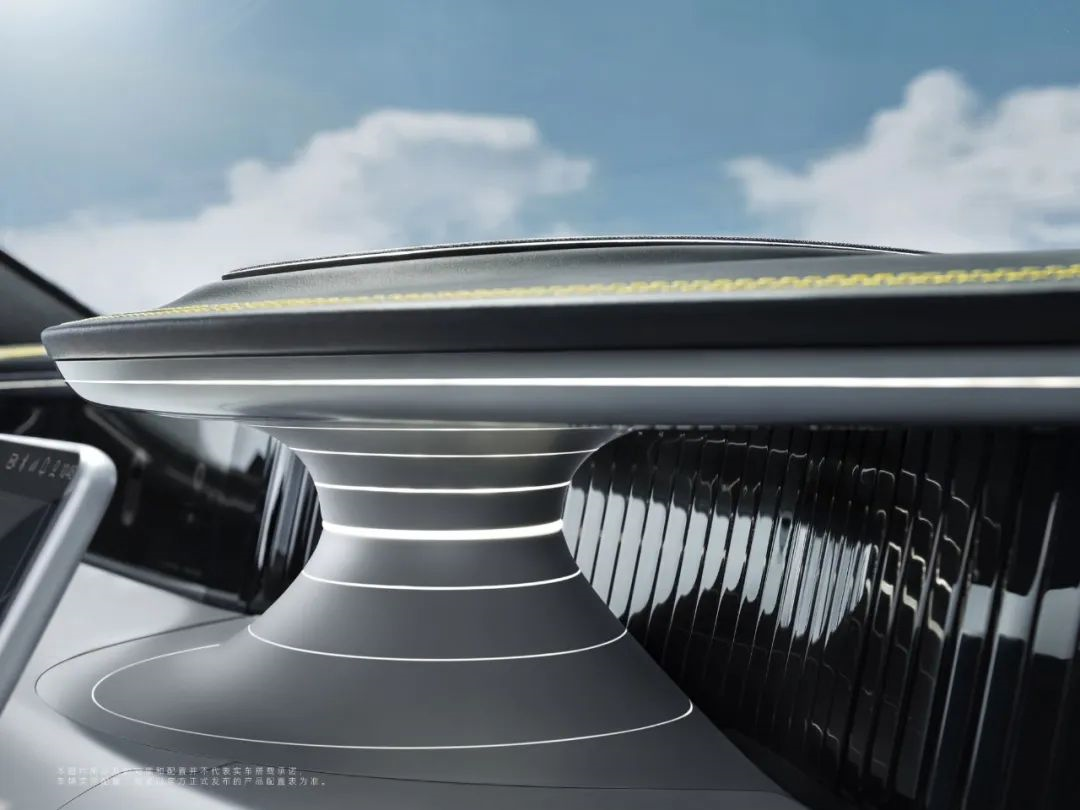
Apart from being good-looking, it may be somewhat strange at first sight. Since Avita 11 has its own interactive entity, why not place it in a prominent position or make a small screen that can move and change like Nomi of NIO?
This is a place to showcase style, and we will split our words into two parts.In our evaluation article of the NIO EC6 in 2021, we summarized the significance of the in-car interactive entity as follows: “NOMI’s appearance is part of the NIO cabin experience, solving the embarrassment of talking to the air in the car, strictly speaking.”
The greatest significance of the interactive entity is not about the sense of technology and premium, but about the portal for perception and emotional projection.
Perhaps when you sit in the cabin of the Avita 11, the light lines on the Vortex emotional vortex may light up along with the ambient lights, and the light emitted by the device itself and the reflective material behind the central control screen will bring a little warm mystery. The in-car intelligent assistant will greet you warmly – “Welcome, sir/madam, please take a seat inside.”
Combined with Avita’s self-introduction, “committed to forward-looking design and warm technology, creating a emotionally intelligent travel experience full of warmth for users,” the in-car intelligent assistant of Avita 11 may exist in the entire cabin in a form of anthropomorphic simulation. As for whether “it” can take on the important role of establishing a deep emotional connection with users, it remains to be further verified.
On the other hand, how to balance the sense of technology and luxury has always been a topic in the cabin design industry. Last year, we also left the thought of “Is it necessary to use intelligence to create a sense of luxury?” in the last episode of the Intelligent Cabin Intelligence Bureau column, featuring the Mercedes-Benz S-Class.
Clearly, the team of Avita 11 does not like to use digital screens with a stronger sense of technology as interactive entities or a robot image that may not be so exquisite in design appearing on the screen to create a certain amount of “futurism”. This probably also corresponds to the positioning of the Avita brand for this car. We believe that this can ensure that the interactive entity and the high-end atmosphere that the brand wants to create in the cabin will not be separated from each other.
At first glance, the Vortex emotional vortex device has a familiar feeling. Later, it suddenly dawned on me that the sense of the lines is reminiscent of the design works of the late architectural master, Zaha Hadid, and the meaning of Beijing Galaxy SOHO-not emphasizing the rigidity of the rectangle, but creating a mutually evolved internal flow line through plastic, rounded volume.


The idea behind this is not a forced interpretation. On the contrary, we hope the design team can come out and explain why, in an industry where “getting on the iPad” is already a common phenomenon, a non-anthropomorphic interactive entity is specifically designed yet not directly visible to the user.
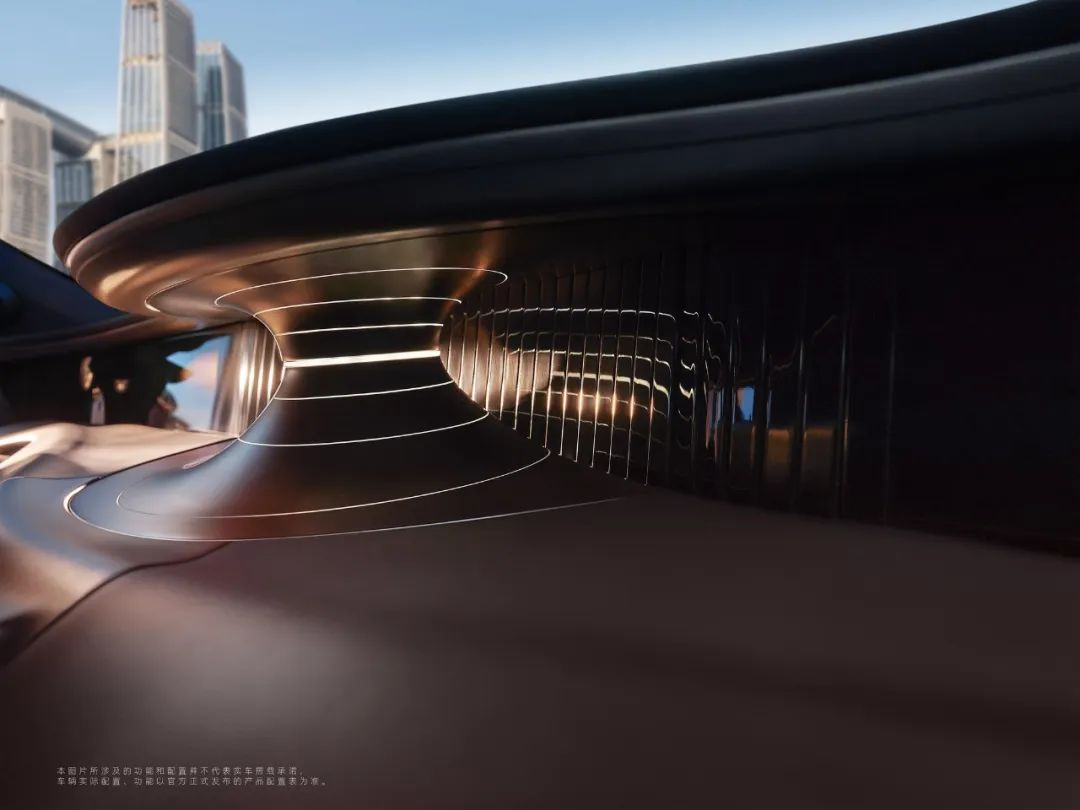
One More Example of HarmonyOS Cockpit Landing Case
Before, when our editing team was talking about Avita’s first model, we always inevitably asked if it was a HarmonyOS cockpit.
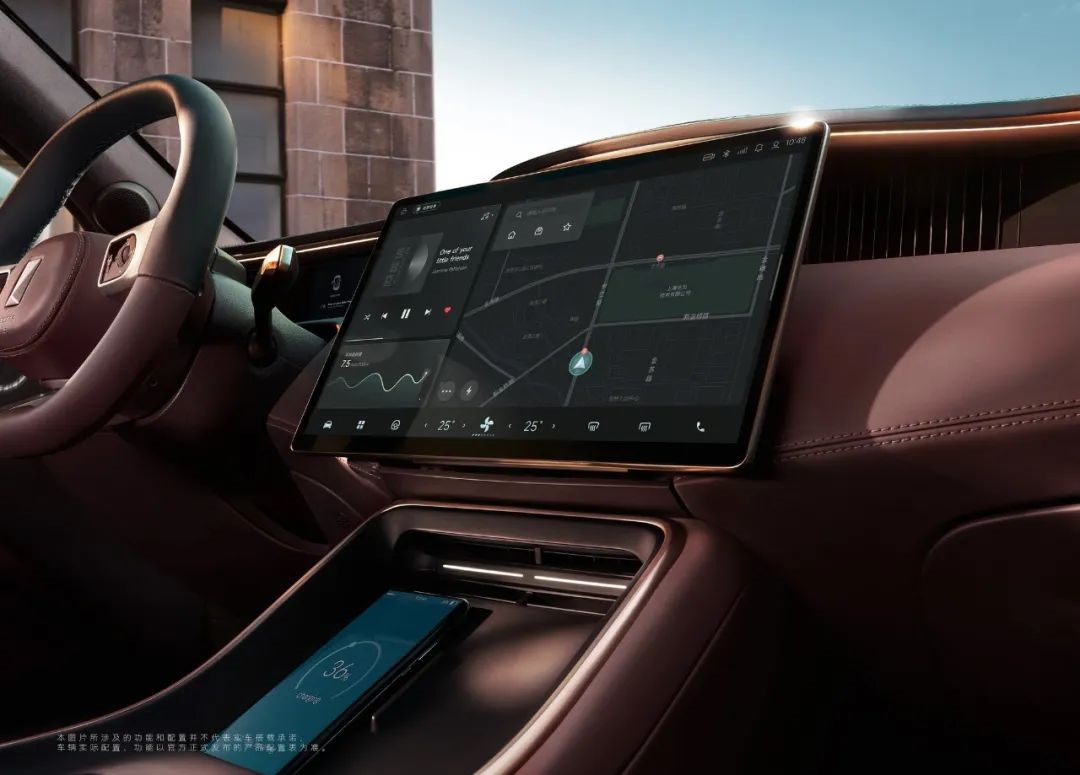
Before more information was released, I was still convinced that on the Avita 11, from assisted driving to intelligent cockpit, they would all be genuine Huawei Inside – including the digital development platform iDVP, automatic driving calculation platform, intelligent cockpit platform, radar, BMS battery thermal management system, and so on.
It’s obvious that the Avita 11 series will come standard with the HarmonyOS intelligent cockpit and the corresponding HarmonyOS ecosystem. The Avita 11 will also become another classic case of HarmonyOS intelligent cockpit landing, following in the footsteps of AITOw Jie M5 and Polarfox Alpha S Huawei HI version.
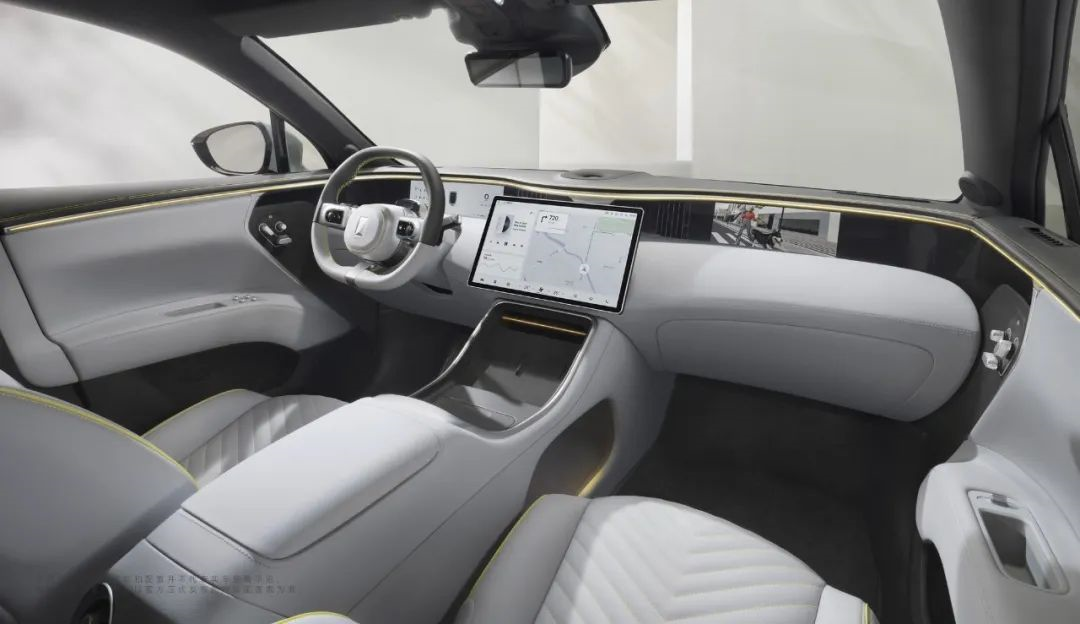
That is to say, based on the known information released by Avita officials and our deep experience and understanding of HarmonyOS cockpit, the Avita 11’s intelligent cockpit is likely to include many familiar features:
-
Excellent fluidity of the car system;
-
Highly available intelligent voice;
-
Interaction logic similar to that of a smart phone with low threshold difficulty;
-
A large number of on-board applications deeply integrated with voice control;
-
Natural and smooth application split-screen experience between the central control screen and the co-pilot screen;
-
Advanced perception interaction and service forms such as active monitoring and air-gesture control.
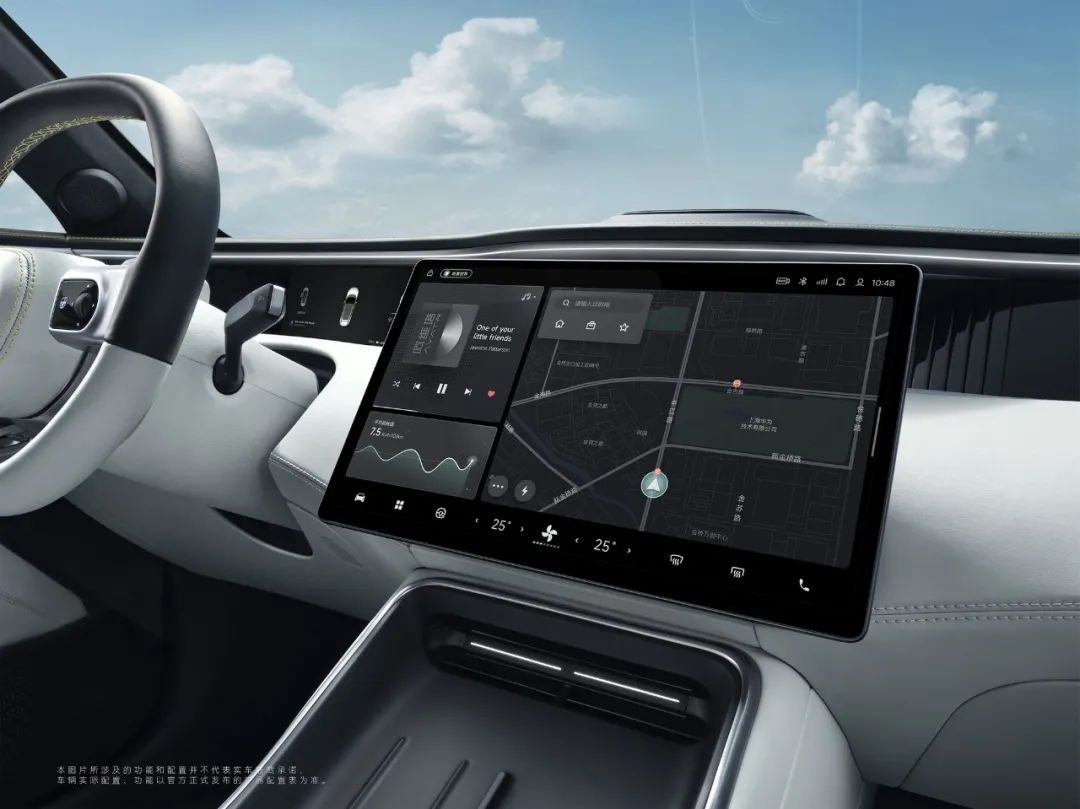 According to official information, Changan Automobile ensures the safety and quality of Evita cars in the CHN intelligent electric vehicle technology platform developed jointly by three parties, Huawei brings intelligent attributes, and CATL provides abundant power.
According to official information, Changan Automobile ensures the safety and quality of Evita cars in the CHN intelligent electric vehicle technology platform developed jointly by three parties, Huawei brings intelligent attributes, and CATL provides abundant power.
As an aside, decades ago, in the days of playing online games with global players, it was not uncommon to see players bearing the “CHN” tag in their IDs. Although the number was small, it still felt somewhat familiar. Because on the other end of the network, there should have been a compatriot.
In this way, the CHN intelligent electric vehicle technology platform itself has a strong sense of pride that emphasizes its pure “Chinese intelligent manufacturing” pedigree.
I believe that this should not be a simple coincidence.
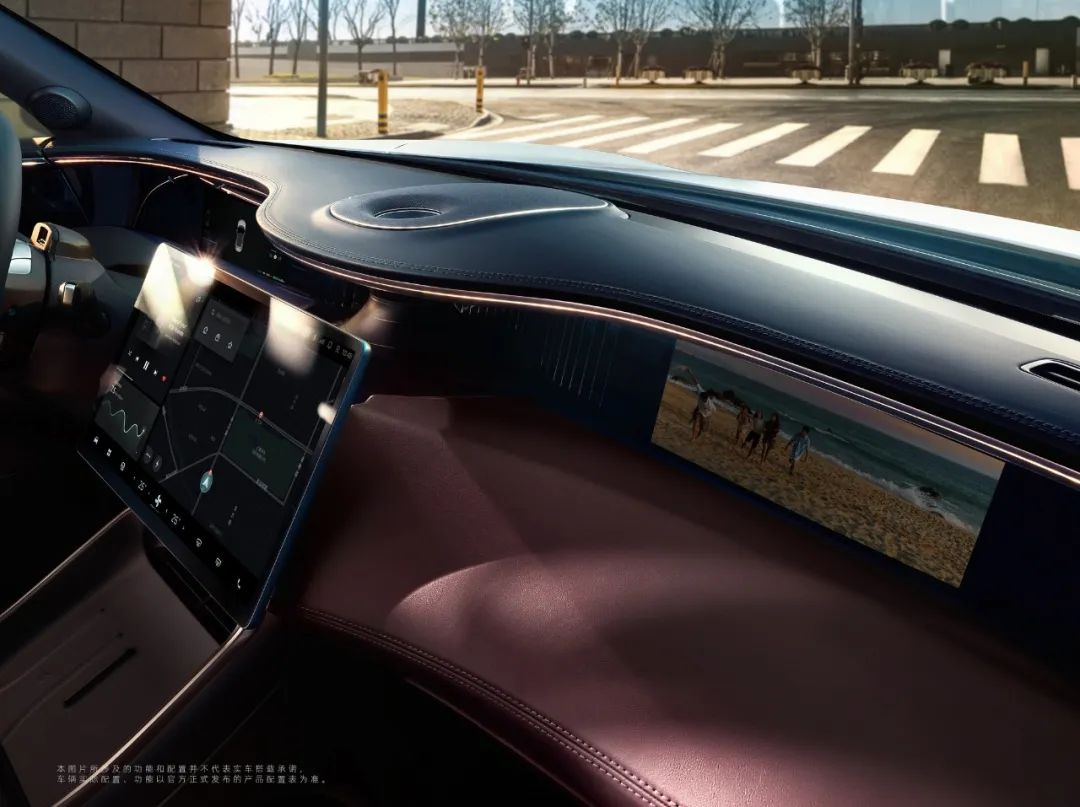
There are also some details worth noting.
According to incomplete statistics, the word “warmth” appeared a total of 5 times in the press release, while “emotion” appeared 12 times.
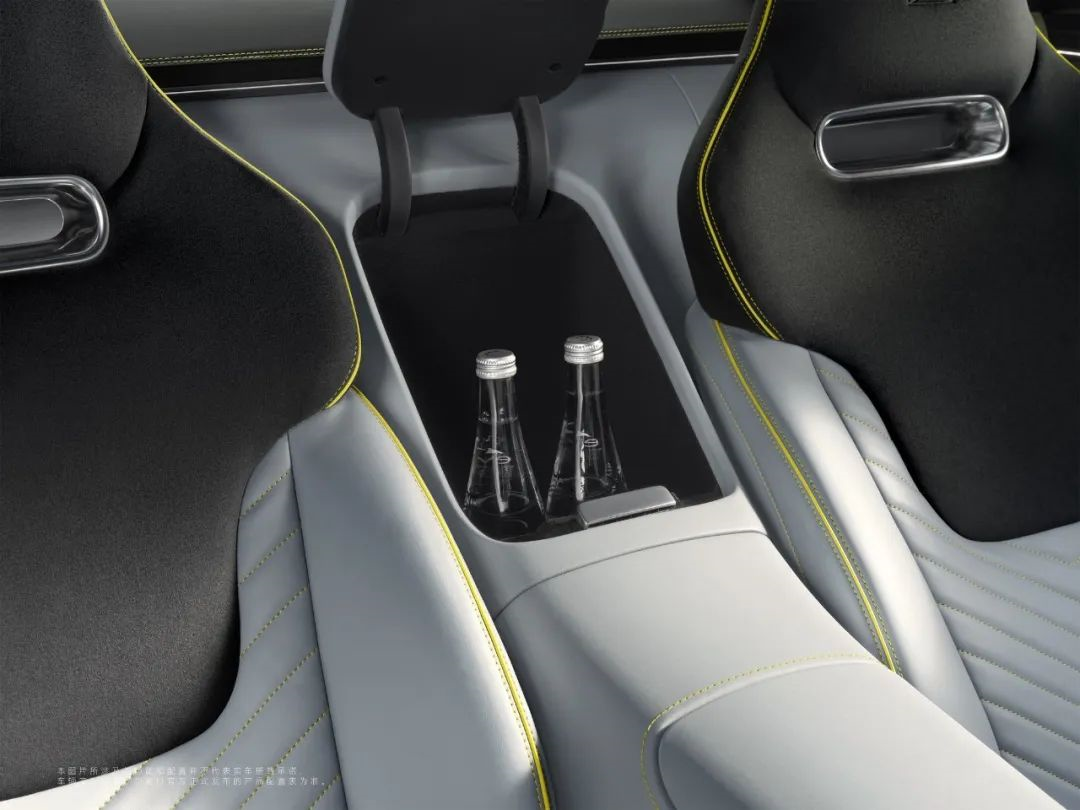
It looks like the brand wants to emphasize the establishment of empathy with users through intelligent performance and considerate product design.
How to achieve this? I think the details are the most touching.
Let’s first talk about the already standard wireless charging function for new cars.
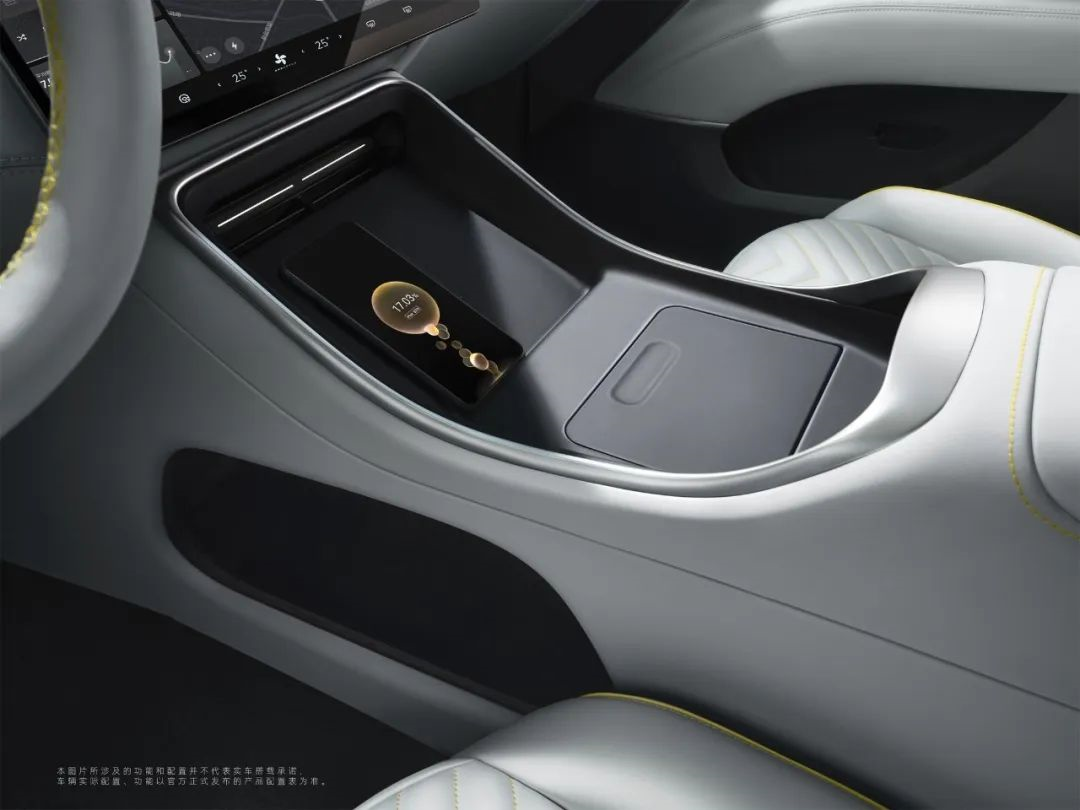
By enlarging the official image of the 11-seat cabin of the Evita, it can be seen that both the front and rear rows are equipped with wireless charging panels.
Compared with the car-mounted wireless charging panel we have seen, the Evita 11 did not make any changes in materials and textures, and did not even use common anti-slip silicone gel and Maya patterns.
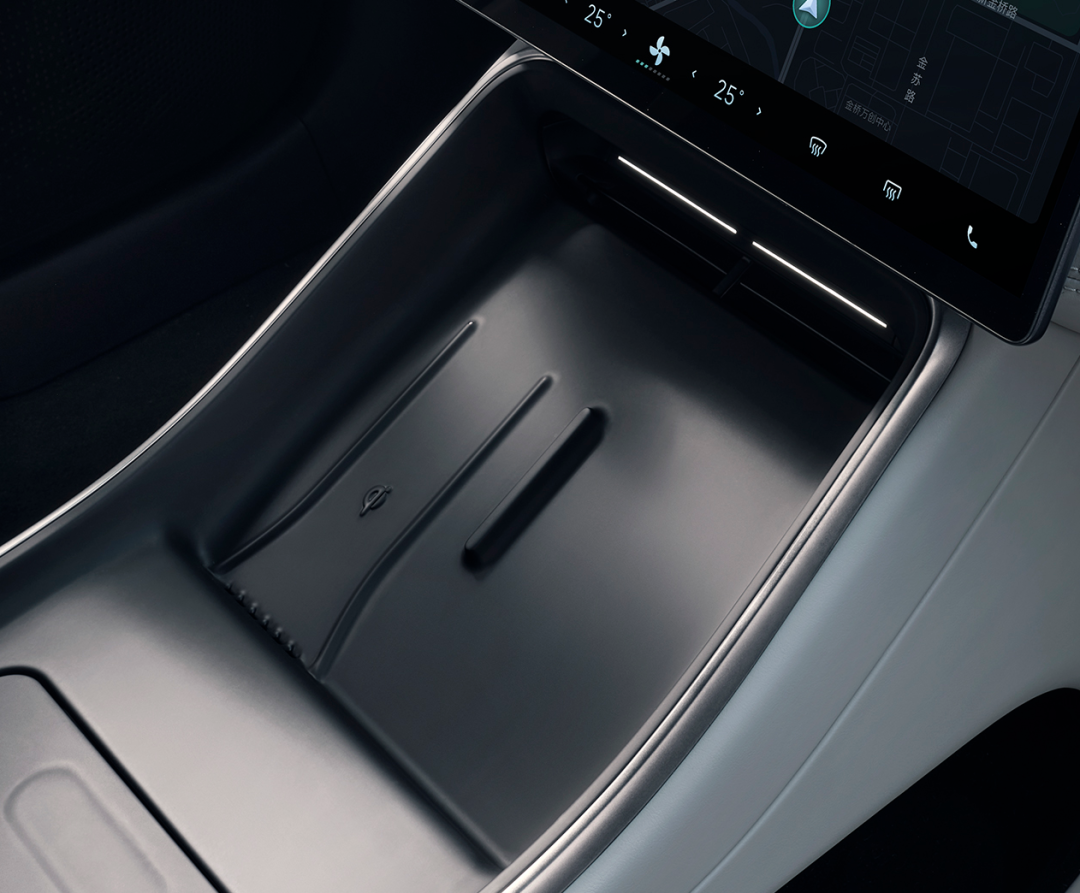
The “qi” symbol in the middle of the charging panel represents the Qi wireless charging standard launched by the Wireless Power Consortium, indicating that its charging function has great versatility. The press release mentions that “some brand mobile phones can achieve up to 50W wireless charging power”, which is likely aimed at Huawei’s own charging protocol, and can only be achieved by supporting wireless charging Huawei phones to enjoy the highest charging speed brought by Evita 11.Though it does not mean that non-Huawei branded phones are excluded, as we previously experienced in AITO M5, the charging experience on non-Huawei branded phones is quite stable and friendly to phone case users.
The protruding stripes on the surface of Avita 11’s wireless charging panel are designed to facilitate better heat dissipation during wireless charging. In the picture, the air outlets of the two charging panels are clearly visible, and they form a fixed air duct with the long stripe pattern, which can focus on the key parts of the phone’s back that heat up during wireless charging.
Although we have seen wireless charging panels with active heat dissipation in the AITO M5, this is a design that would typically only be used for desktop wireless chargers priced at several hundred yuan. We can see that Avita 11 hopes to demonstrate its sincerity in the details.
Let’s take a look at the active road noise reduction technology installed in the Avita 11.
Active noise reduction in cars is not a new technology. Its principle is very similar to ANC(Active Noise Cancellation) technology in headphones. It collects external noise in real time through multiple microphones and other sensors, and then the noise reduction system (car speaker) generates an opposite sound wave to neutralize the external noise, thereby reducing noise. Some models of brands such as BMW, Audi, Volvo, and Lexus have been equipped with this technology.
As for a comparison with competitors, the active road noise reduction technology implemented in Bose’s QuietComfort, a top global acoustic system brand, is able to reduce road noise within the working frequency range by 3 to 6 dB and within a specific frequency range by up to 10 to15 dB.
The RNC(Road Noise Cancellation) active road noise reduction technology implemented in Avita 11 can comprehensively reduce road noise in the car’s 40-500Hz frequency range when the active noise reduction function is turned on. The official test data indicates that the total sound pressure level can be reduced by up to 3 dB, and the peak sound pressure level can be reduced by up to 13 dB. In terms of numerical values, it has already reached the leading level among peers.
If we say that the wireless charging design earlier tested the details, then the installation of an active noise reduction system is an expression of Avita’s “enthusiasm” for bringing upgrades and experiences from a high level of configuration to the consumer.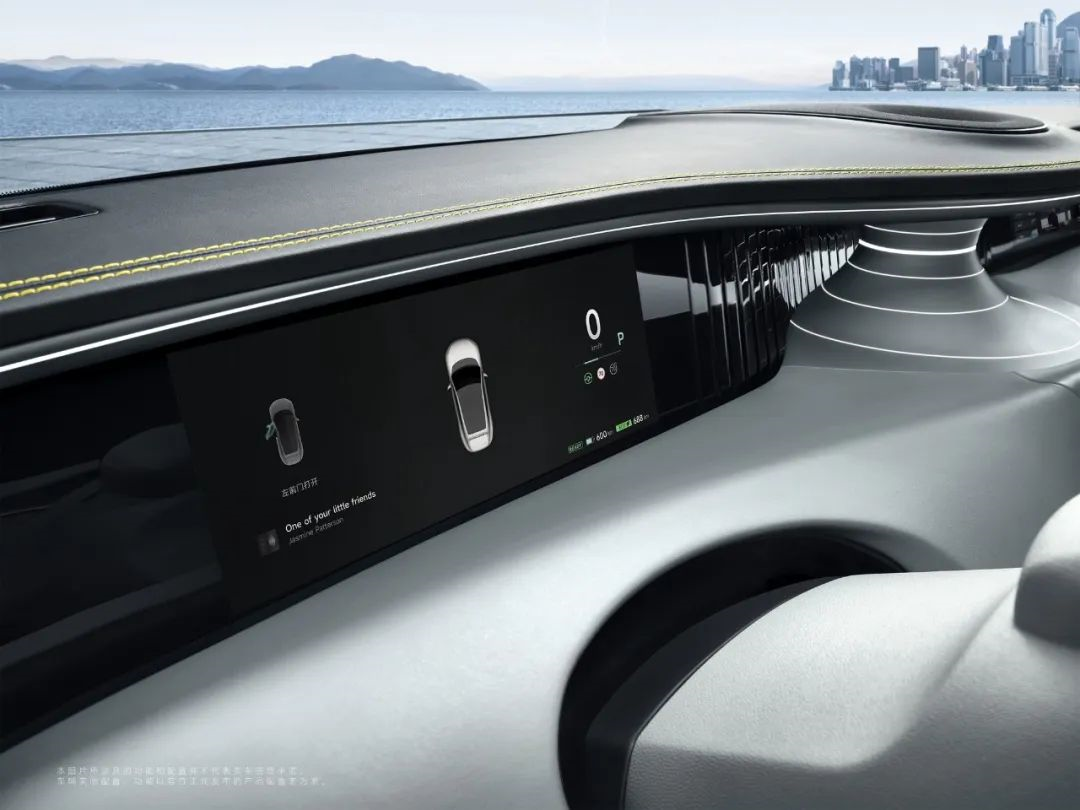
Final Words
Fashion, cross-border, technology, futuristic, high-end luxury, and warmth and consideration…
These positive keywords come together to convey the information about the first car model of Avita, the newborn brand, to the outside world.
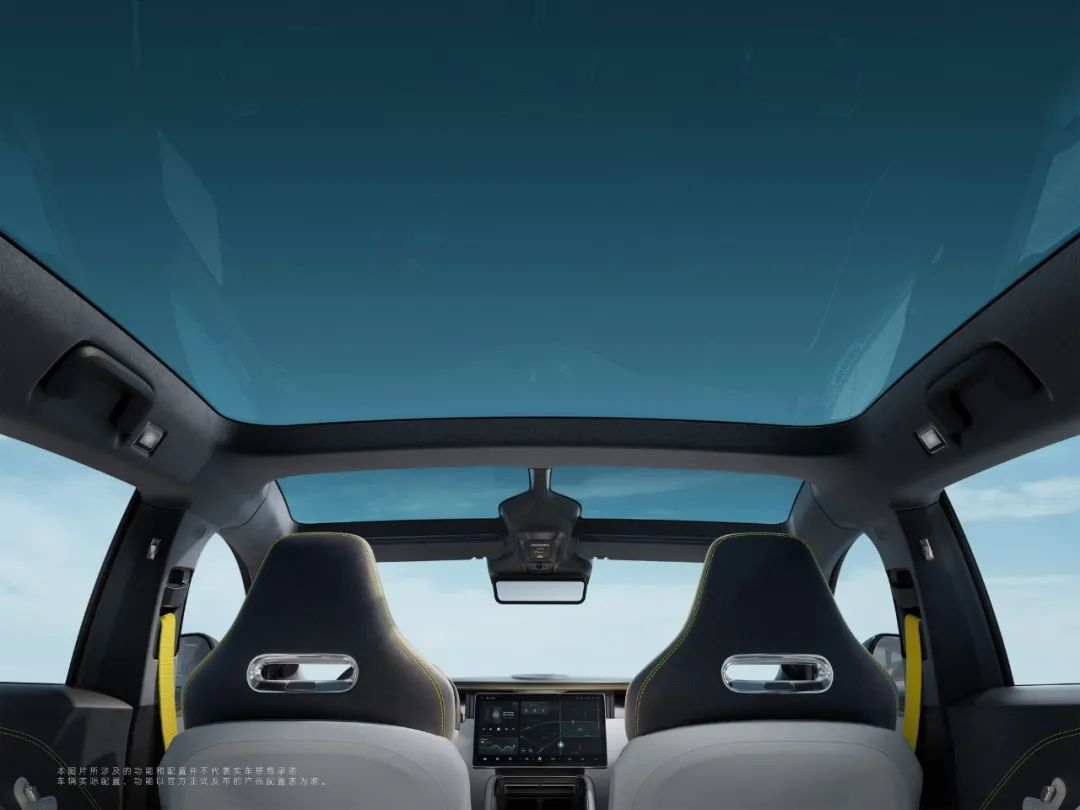
From the textual and visual content released in this batch, I see the brand’s expectations for the future, which are being realized through its products.
For the three giant companies that founded Avita Technology, “cross-border” collaboration does not mean the “joint branding” concept in a broad marketing sense or achieving “1+1+1>3”. Rather, it means doing what they are best at to the extreme in a brand that is new and free from baggage through realistic expectations.
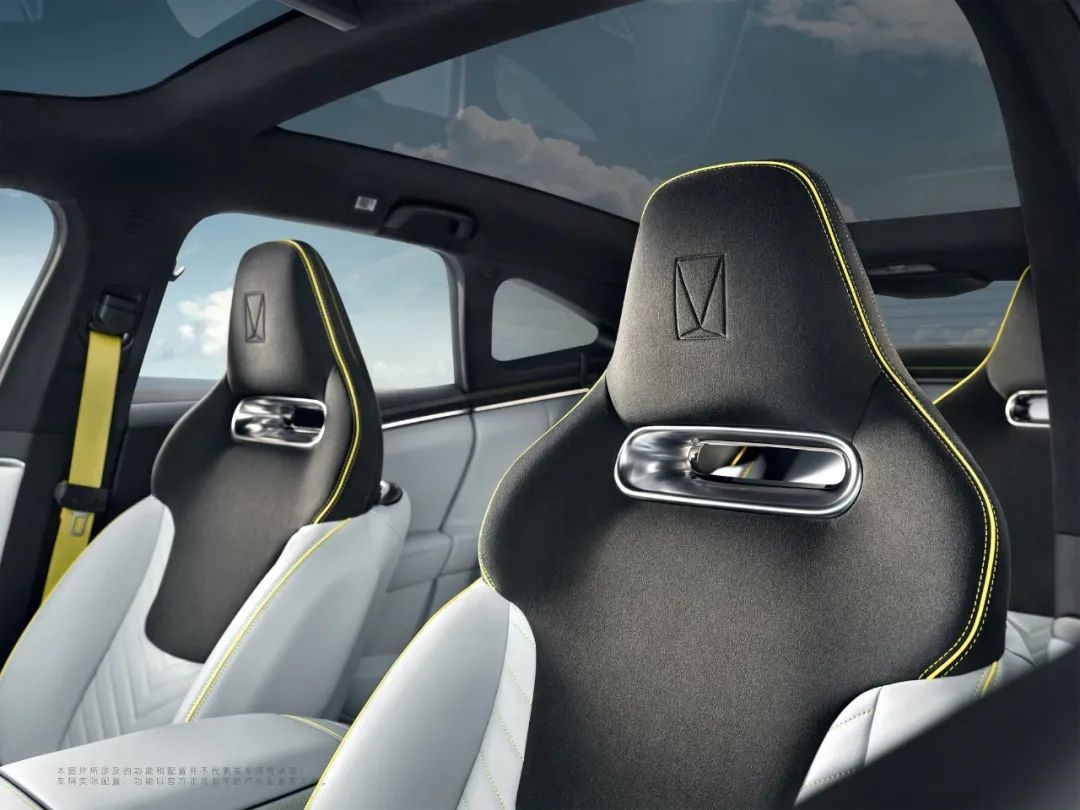
Therefore, Avita is not playing cross-border, but its very existence is cross-border itself.
This article is a translation by ChatGPT of a Chinese report from 42HOW. If you have any questions about it, please email bd@42how.com.
